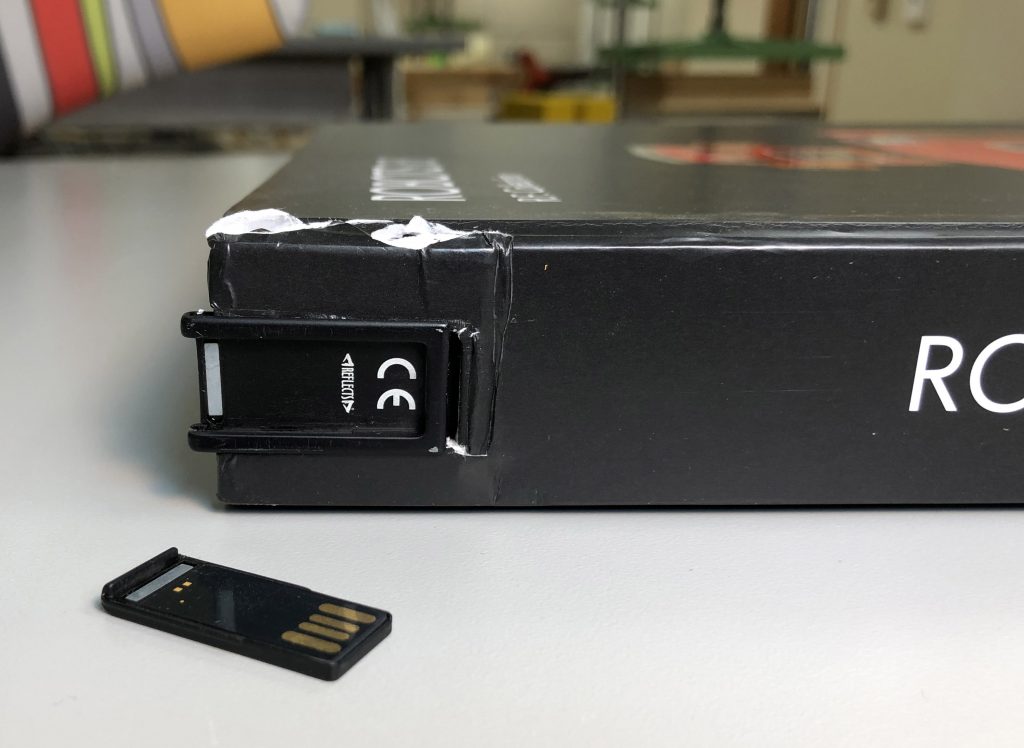We regularly see book publishers’ attempts to set their products apart from the rest of the market here in the conservation lab – usually because the novel materials or structures they have chosen don’t hold up so well under normal use. We often find ourselves asking, “What will these publishers try next?” This week the answer to that question came in the form of robots.
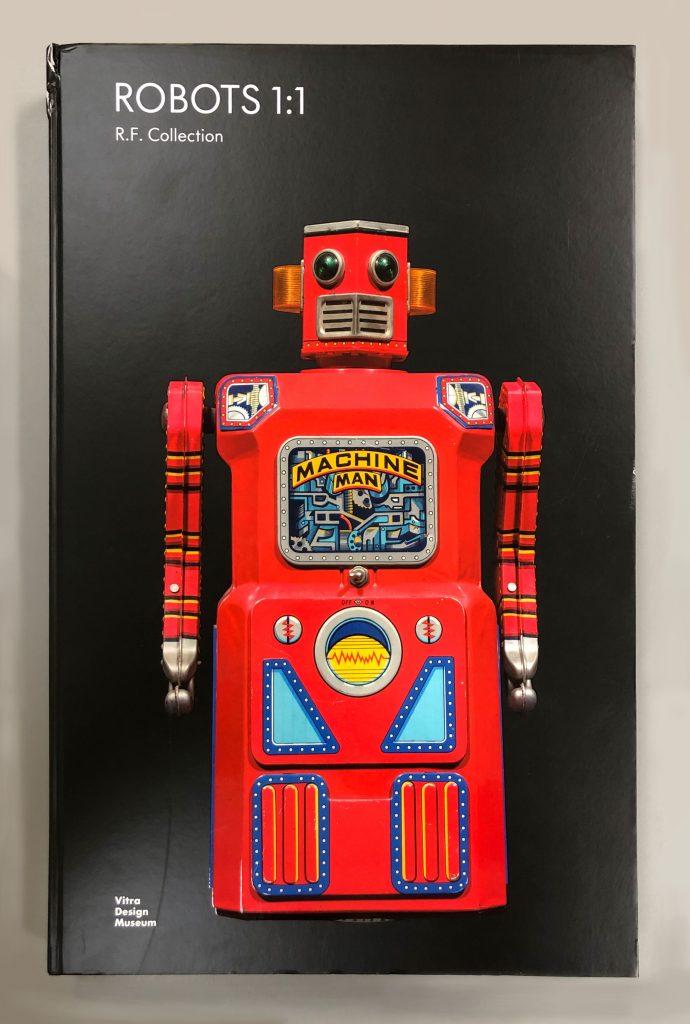
This very large and weighty volume depicts over 100 space-themed toys held by the Vitra Design Museum. Much like our copies of Audubon’s Birds of America, the book is so large because the toys and their original packaging have been photographed and printed at a scale of 1:1. And I will say the images are wonderful.
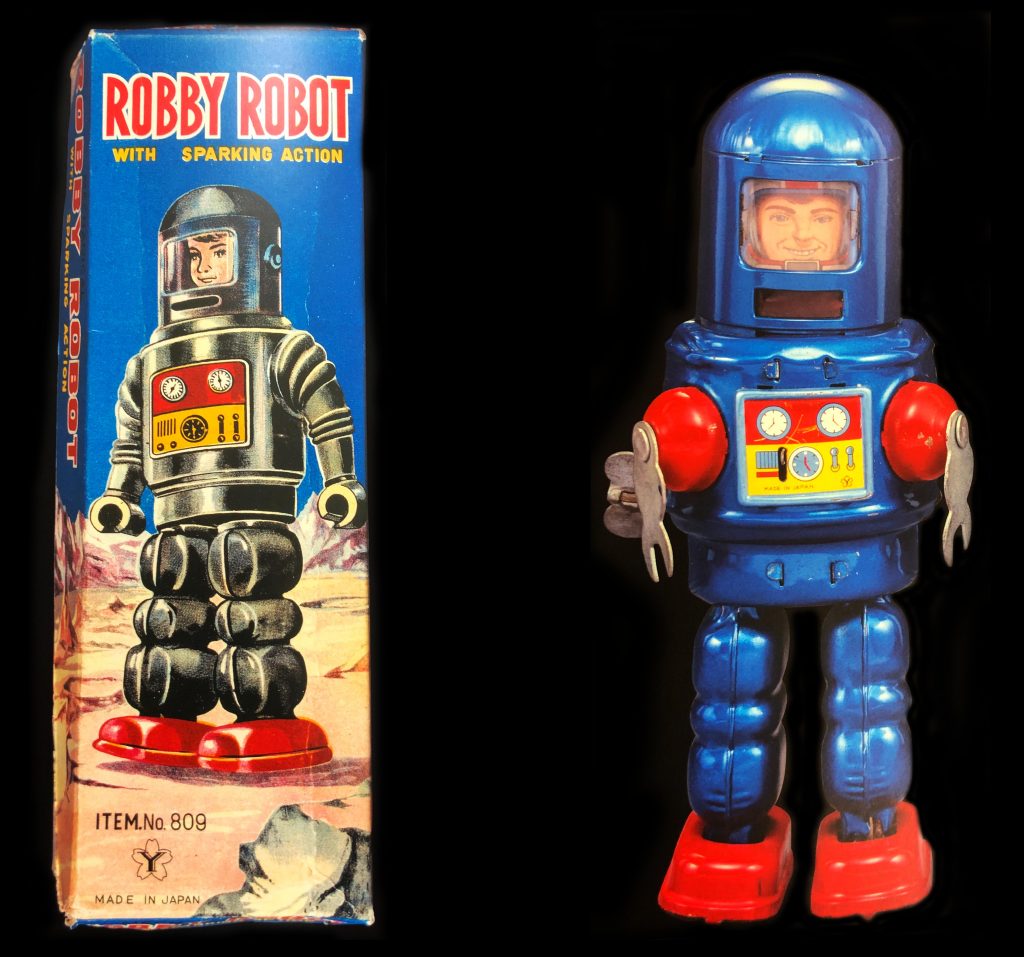 The unique feature of this book, however, is a USB memory stick that has been integrated into the headcap. The stick contains a film by Luka Dogan, showing a selection of the robots in action.
The unique feature of this book, however, is a USB memory stick that has been integrated into the headcap. The stick contains a film by Luka Dogan, showing a selection of the robots in action.
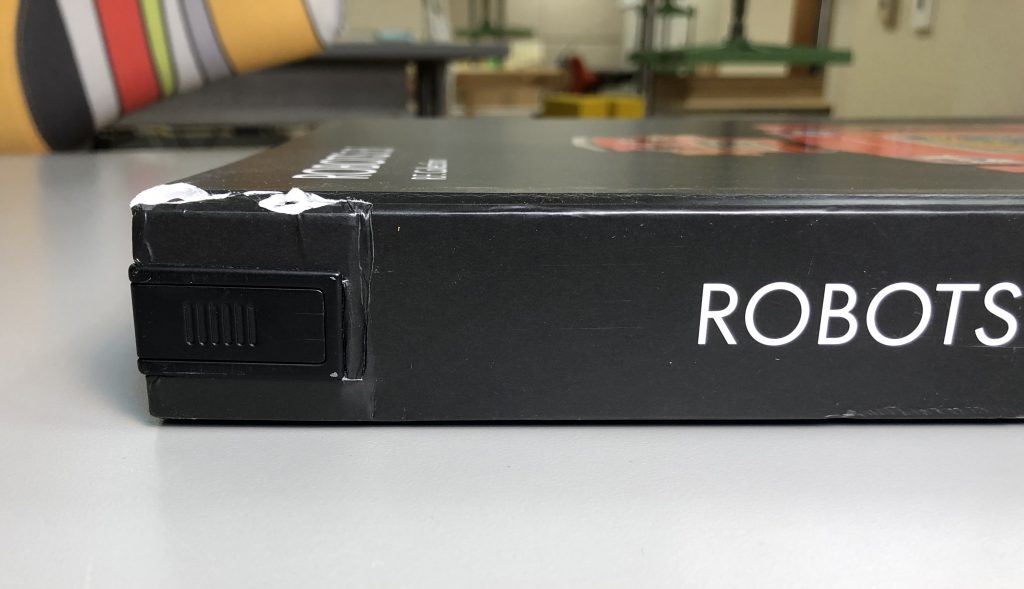 We often see volumes with additional media included, usually as a CD or DVD inside a paper or plastic pocket that has been adhered inside one of the boards. Other types of media are too thick to be handled in the same way, so the location of this USB and it’s “holster” are interesting and unobtrusive. It includes some nice design elements, like a small magnet to hold the stick securely in place.
We often see volumes with additional media included, usually as a CD or DVD inside a paper or plastic pocket that has been adhered inside one of the boards. Other types of media are too thick to be handled in the same way, so the location of this USB and it’s “holster” are interesting and unobtrusive. It includes some nice design elements, like a small magnet to hold the stick securely in place.
The problem comes when you actually try to get the stick out. Grasping the stick and pulling it free puts a lot of stress on the headcap and joints, some of the weakest areas of the binding. As you can see, the front joint has already started to tear. Additionally, the glue holding the metal USB holster in place has failed and it now easily slides out from the spine piece.
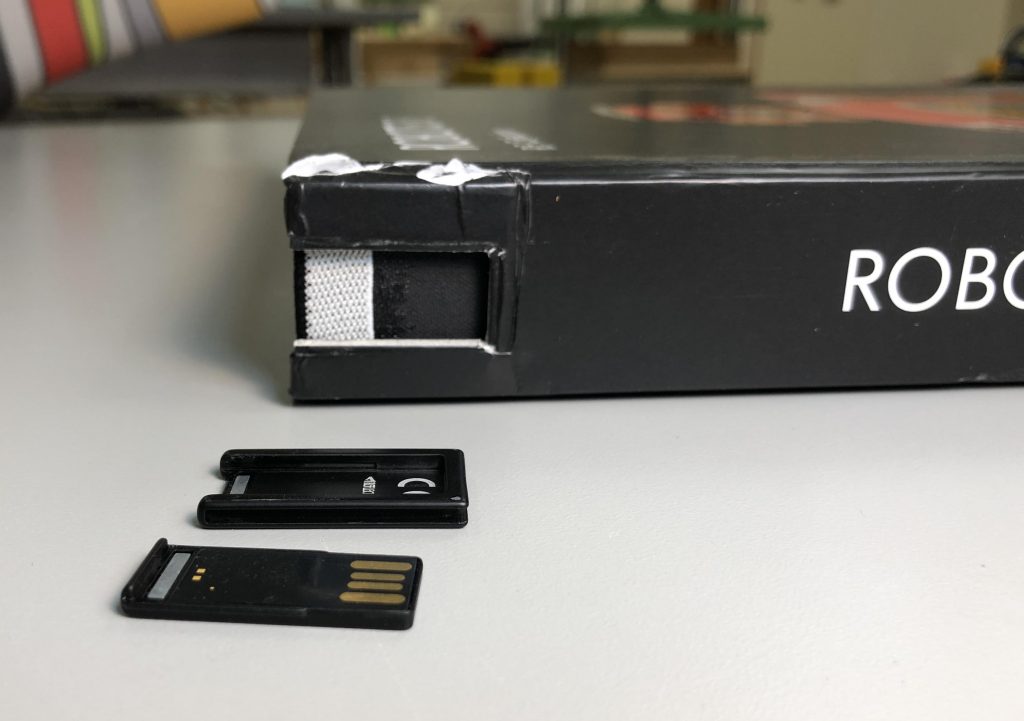 Including additional media with a publication can provide a lot of additional value to the reader. It also means loose components can easily become lost. As technology ages, it can be a challenge for readers to actually use the media. For example, the laptop I’m using to write this post doesn’t have a disk drive of any kind, so reading a CD or DVD would be a problem. I guess it’s only a matter of time before a USB Type-A port becomes scarce as well. The added media might become less accessible, but at least you don’t need a machine to read the book!
Including additional media with a publication can provide a lot of additional value to the reader. It also means loose components can easily become lost. As technology ages, it can be a challenge for readers to actually use the media. For example, the laptop I’m using to write this post doesn’t have a disk drive of any kind, so reading a CD or DVD would be a problem. I guess it’s only a matter of time before a USB Type-A port becomes scarce as well. The added media might become less accessible, but at least you don’t need a machine to read the book!


